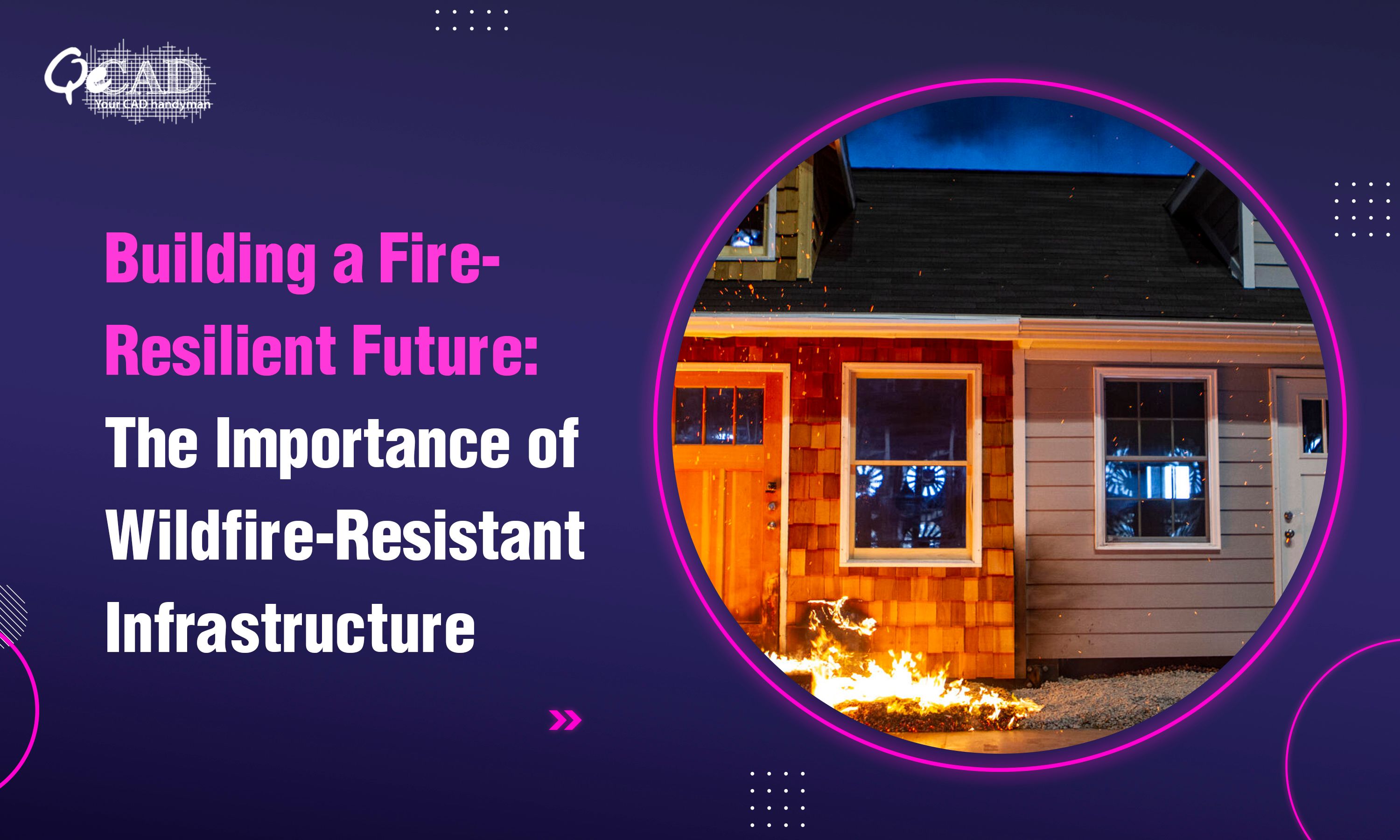
Introduction
Wildfires have become an increasing global concern with the rising temperatures and changing climatic patterns thereby intensifying their frequency and severity. Whether you reside in urban or in rural settings, the wildfires pose significant risks to the human life, property as well as the environment. To mitigate these risks, investing in the wildfire-resistant infrastructures has become more critical than ever. This approach involves designing and constructing the buildings, the transportation networks as well as the public utilities to withstand the fire hazards ultimately enhancing the community resilience and safety.
The Growing Threat of Wildfires
Over the past few decades, wildfires have increased in both frequency and the intensity due to the factors such as climate change, deforestation and also the urban expansion into fire-prone areas.
Regions such as California, Australia and few parts of Europe have witnessed record-breaking wildfires thereby leading to significant economic losses and human casualties. The need for fire-resilient infrastructure is no longer optional but a necessity to protect the lives as well as safeguard the investments.
The Impact of Wildfires on Infrastructure
Wildfires can cause devastating damage to the critical infrastructure including:
- Buildings and Homes: Traditional construction materials like the wood and asphalt shingles are highly flammable thereby leading to the widespread destruction in the fire-prone areas.
- Transportation Networks: The roads, bridges and railway systems can easily be compromised or destroyed impeding the evacuation efforts as well as the emergency responses.
- Utilities and Power Grids: The electrical systems, water pipelines and telecommunications can fail leaving the communities without the essential services during and even after a fire.
- Environmental Degradation: The wildfires leads to the soil erosion, water contamination and also the destruction of biodiversity tehreby affecting the long-term sustainability.
Key Features of Wildfire-Resistant Infrastructure
- Fire-Resistant Building Materials: Using materials such as concrete, fire-resistant glass, metal roofs and treated wood can significantly reduce the fire damage.
- Defensible Space Design: By creating the buffer zones with the fire-resistant landscaping and removing the combustible vegetation as well as by maintaining the adequate spacing between the buildings can prevent the fire spread.
- Smart and Resilient Power Grids: With the underground electrical lines, fireproof substations as well as the backup energy sources like solar panels and microgrids can ensure the power continuity.
- Enhanced Water Supply Systems: By having readily available water sources, fire-resistant pipelines along with the sprinkler systems can aid in the fire suppression.
- Evacuation and Emergency Planning: By designing accessible road networks, clearly marked escape routes and emergency response centers can save lives in the critical situations.
Role of Emerging technologies in Designing Wildfire- Resistant Structures
1) Fire-Resistant Building Materials
- Using advanced materials such as fire-resistant concrete, intumescent coatings and phase-changing materials helps to prevent the structural failure during the wildfires.
- Cross-laminated timber (CLT) treated with the fire retardants enhances the sustainability without compromising on the safety.
2) Smart Sensors and AI-Based Early Detection
- The IoT-based heat and smoke sensors provides the real-time wildfire alerts.
- The AI-powered satellite imagery as well as the drones helps in early fire detection and predictive analytics.
3) Automated Fire Suppression Systems
- Smart sprinkler systems and aerial water-dropping drones can activate automatically to control the fire spread.
- AI-driven fire suppression robots can navigate to the hazardous areas and deploy the extinguishing agents.
4) Fire-Resilient Urban Planning & BIM Integration
- GIS and BIM for Infrastructure allows the architects and planners to simulate the fire behaviour and design much safer infrastructure accordingly.
- Firebreak zones, defensible spaces and also the controlled vegetation management can reduce the fire risks in the urban developments.
5) Heat-Resistant Glass and Smart Facades
- Multi-layered tempered glass with the heat-resistant coatings prevents the window failures in the extreme temperatures.
- Smart facades with self-healing fireproof materials enhances the building resilience.
6) Energy-Efficient Fireproof Roofing and Cladding
- Metal, fibre-cement along with the composite roofing materials reduces the ignition risks to a greater extent.
- Self-extinguishing cladding prevents the flames from spreading across the building exteriors.
7) Resilient Landscaping & AI-Driven Fire Modeling
- Fire-resistant vegetation and automated irrigation systems minimizes the fuel for the wildfires.
- AI-driven simulations analyses the historical data to optimize the fire-resistant urban layouts.
Benefits of Wildfire-Resistant Infrastructure
- Protecting Human Lives: The strengthened infrastructure reduces the fatalities and injuries caused by the wildfires.
- Economic Stability: Minimizing the fire damage prevents the costly repairs and economic losses for the homeowners, businesses and even governments.
- Environmental Conservation: Fire-resistant landscapes and sustainable construction methods help to preserve the ecosystems as well as reduce the carbon emissions.
- Community Resilience: Investing in the fire-safe infrastructures ensures the faster recovery and long-term security for the affected regions.
Conclusion
As the wildfires continues to pose an increasing threat, prioritizing of the wildfire-resistant infrastructure is essential. Governments, urban planners, engineers as well as the communities must work together to implement the fire-resilient designs and technologies. These proactive investments today can help to safeguard the lives, properties and also the environment thereby ensuring a safer and more sustainable future for all.
By building a wildfire-resistant infrastructure, we are not only protecting ourselves but also fostering a resilient world that can withstand the challenges of an evolving climatic landscape.
